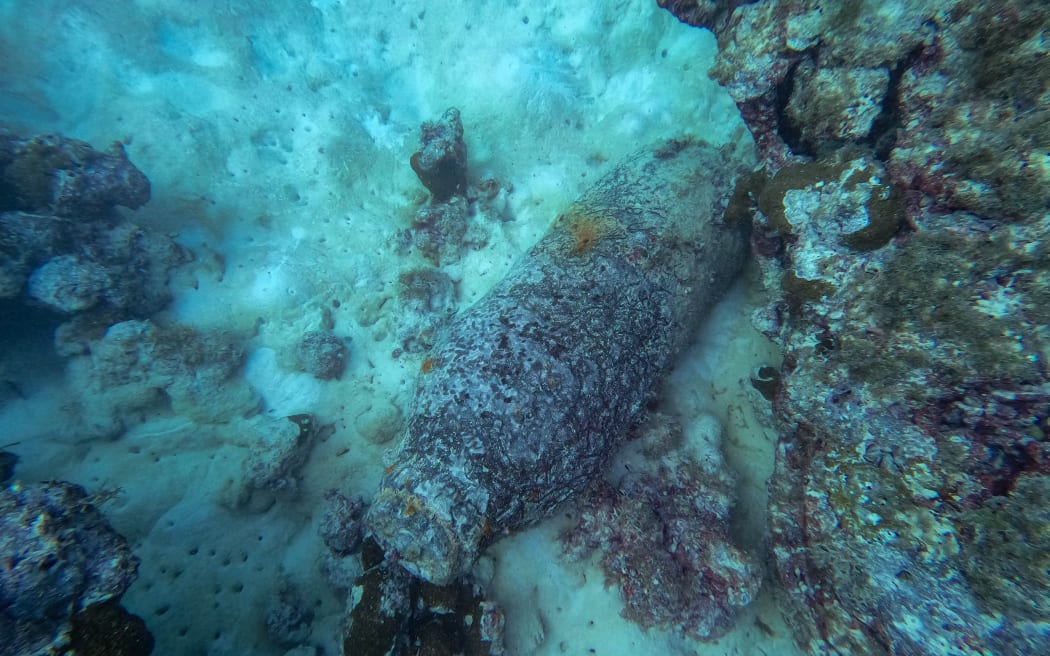10/10/2022 Nuova Zelanda
“If you ever come across anything suspicious like this item, please do not pick it up, contact your local law enforcement agency for assistance”
Alexia Russell, reporter for the Detail-alexia.russell@rnz.co.nz
Cities have been rebuilt, borders redrawn – but there’s still an estimated 1.6 million tonnes of ordinance on ocean floors. Some experts say there’s a lot more than that. The New Zealand Navy is doing its part to whittle down that number, taking part recently in a joint operation near a lagoon in Tuvalu to remove 22,500 pound AN-M43 aerial bombs most likely dumped there by the US military at the end of the fighting in World War II. Operation Render Safe was run by the Australian Navy, with Canada and US Marines also taking part. However the Tuvalu find is a drop in the ocean of a project that may never end. And ERW – or explosive remnants of war – are also a clear and present danger on land. Some of our Pacific Islands are still in dire need of a clean up. “I don’t even think you could put enough zeros on how much would be needed to do it properly,” says RNZ Pacific journalist Koroi Hawkins. He grew up in the Solomon Islands where WWII relics were, and still are, part of the landscape. “How many millions of dollars would you need to go through those salvage and secure operations? There’s just not, at the moment, any political will to be doing any of that stuff, because there’s so much out there.” He talks to The Detail about life growing up with gunpowder as a regular feature; the continuing loss of life and limb as old ordnance explodes; and the proliferation of it throughout the islands around where the battle of Guadalcanal took place. The Detail also talks to Lieutenant Commander Simon Marston, the officer in charge of the dive group at NMNZS Matataua, which is the specialist unit that took part in Operation Render Safe. New Zealand has an equivalent operation, called Pukaurua. Every two years the unit tries to get up to the islands to do some work around removing old ordnance. While they’re there diving for bombs, they lay the groundwork for the next trip, talking to elders who have had passed down to them the locations of dumped munitions.
If you find anything that appears to be an explosive device, do not touch it, leave it where it is and call the police. We will contact the appropriate agencies to properly dispose of the item.
Biography of a Bomb
Dear editors, Biography of a bomb is aimed at highlighting the danger caused by unexploded bombs. Moreover, the most important aspect is that we work completely non profit, raising awerness about this topic is what drives us. We apologize if we make use of pictures in yours articles, but we need them to put a context in how findings are done. We will (and we always do) cite source and author of the picture. We thank you for your comprehension.





